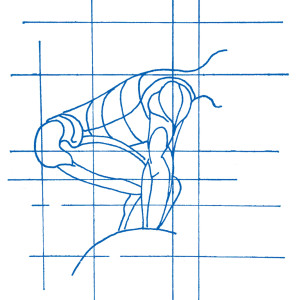Something I have been meaning to write about is the lack of details provided with the exercise advice that can be found in widely distributed channels. A quick search on the internet will turn up thousands of articles with tips for exercise topics like injury prevention, rehabilitation, postural restoration, back pain relief, plateau mitigation, and just about any other goal you can think of. But, many of the most common sites almost always lack the one thing that is key to realizing the full potential of the suggestions – the details! I’ve picked out three common problems and would like to fill in some of these details to show you where the potential lies, and where it is often missed. If you have ever searched the net for exercises because of some nagging issue you are desperate to get solved, read on!
1. Runner’s Knee
The Suggestion: This has to be one of the most common injuries out there and a search will turn up hundreds of articles on the subject. I checked the first six hits and they all involved some form of lower body strengthening including exercises like squats, bridges, single legged squats etc. And they should, because knees need to be protected with strong legs and hips.
Missing Detail: What if your hip joints and their associated musculature are so stiff that they cannot move properly? (Which is very common in runners!) In that case, you won’t end up effectively training what you are trying to. Instead, compensation patterns will limit the effectiveness of the exercise, making it at best inefficient and at worst ineffective. Even something as simple as bridges can be wasted effort if the individual performing them is moving through the spine rather than the hip.
Solution: In some way, you need to assess the mobility of the lower body. You could do this with a Physical Therapist, Personal Trainer, Orthopedist, or any other qualified professional. A few simple stretches can really open up restricted hips. Then they will be ready for some strengthening!
2. Poor Posture
The Suggestion: Many sites will recommend core workouts to improve posture. They often include exercises such as leg lifts, crunches, planks, etc. Some will also recommend upper back exercises like I’s, T’s, Y’s, and W’s or Wall Angels.
Missing Detail: Most people do need a stronger core and should include it in their routine, and a stronger core will help with posture. However, training the core sometimes becomes the catch-all solution for every ailment out there. I would emphasize not core exercises, but upper back strengthening and chest stretching. Here again though, the details matter. If your shoulders are rounded when you perform an upper body back exercise you will probably compensate. Instead of moving the entire upper body correctly you may overuse the shoulder joint. This will only reinforce the bad posture while adding wear to already overstressed shoulders.
Solution: Evaluate shoulder mobility and develop a strategy for addressing deficits. Then, become familiar with proper shoulder movement when performing upper back exercises. If you start off with the proper foundation posture will improve. If you go after it without removing bad habits, it will stay the same or potentially get worse. Check out Rows – Three Mistakes to Avoid for more on that.
3. Avoiding Plateaus
The Suggestion: To avoid or overcome plateaus mixing up your routine is in order. Some sites will recommend periodization, which is the order of the day.
Missing Detail: One of the biggest challenges in fitness is defining fitness appropriately. It’s a little like defining art. Think about it for a moment. An NFL linebacker and a world class marathoner standing side by side will look about as polar opposite as you could ever be. Both, however, are extremely fit as far as their sports are concerned. Most casual exercisers have never defined what fit means to them as clearly as either of these athletes, and this is a problem. If you wish to continually make progress and avoid plateaus, you had better be able to say specifially where you are trying to get in the first place.
Solution: Sit down and write a couple of goals. Make them specific. For example, “lose 5 lbs. by March” rather than “lose weight.” Then, look at your current habits with regards to exercise and nutrition and identify what things can be optimized to move forward. This is an extremely simplified version of doing some programming. What I would truthfully and wholeheartedly recommend if you feel stuck in a plateau is to seek out a fitness professional and let them help you identify and prioritize steps into a periodized program. For more on periodization, check out What Is Cycling/Periodization?

